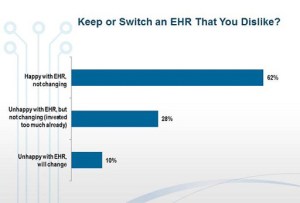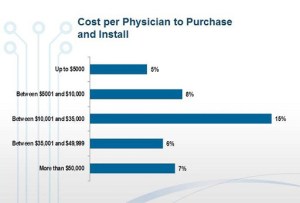Two years and $8.4 billion into the government’s effort to get doctors to take their practices digital, some unintended consequences are starting to emerge. One is a lot of unhappy doctors. In a big survey by Medscape this summer 38 percent of the doctors polled said they were unhappy with their electronic medical records system.
Dr. Mary Wilkerson is one of those doctors. Her small family practice in Denver made the leap to an electronic health record five years ago, with some pretty high expectations.
“We were told by sales people that we would make more money, because we’d be more efficient, and you’d be able to see more patients,” says Wilkerson. “We’d be able to bill faster, get the money in the bank at the push of a button. And none of that panned out.”
Instead, Wilkerson’s practice found that electronic records actually slowed things down, and the doctors could see fewer patients.
“Within six months of our purchase, one of the partners just did not like it at all, did not like dealing with the computer, and actually left the practice, and we’d hoped she’d contribute to the loan that we’d taken out” to pay for the electronic system, says Wilkerson.
Wilkerson’s problems with the system are a stark contrast to the experience of other doctors who have embraced electronic records and patients who have good reviews of them, too.
Marina Blake of Denver is one of those patients. Blake uses a lot of health care, and she likes that the specialists she sees can all call up the same health record that her primary care doctor uses. She can also call up her own record anytime.
“It does add definitely a layer of customer service to my experience that is really awesome,” says Blake, who belongs to a large health care system that uses electronic records. “For me it’s part of being an educated consumer. If I have more information, then I can ask better questions.”
The federal government wants every patient to see the same benefits from electronic records Blake does. It’s offering doctors and hospitals up to $63,000 per physician to go digital.
But Wilkerson’s practice didn’t get much government money, because payments to go digital are tied to seeing a lot of Medicare patients, which Wilkerson and her partners didn’t do. They took out a loan because it’s common for physicians to pay $10,000 or more each for digital records systems. So losing income from not being able to see as many patients was hard on Wilkerson’s practice. The expense and the hassle was part of the reason that she and her partners ultimately decided to sell their practice.








